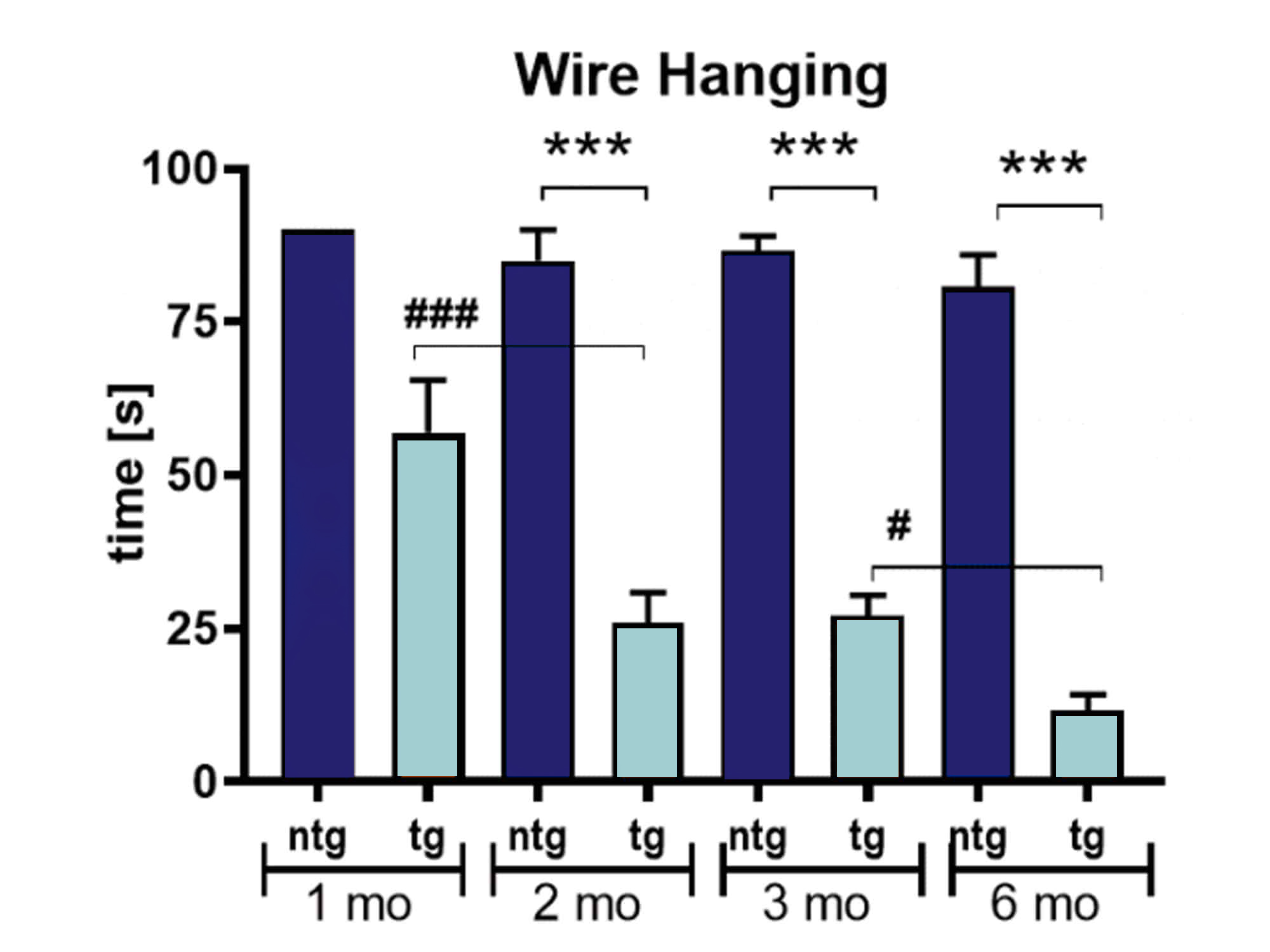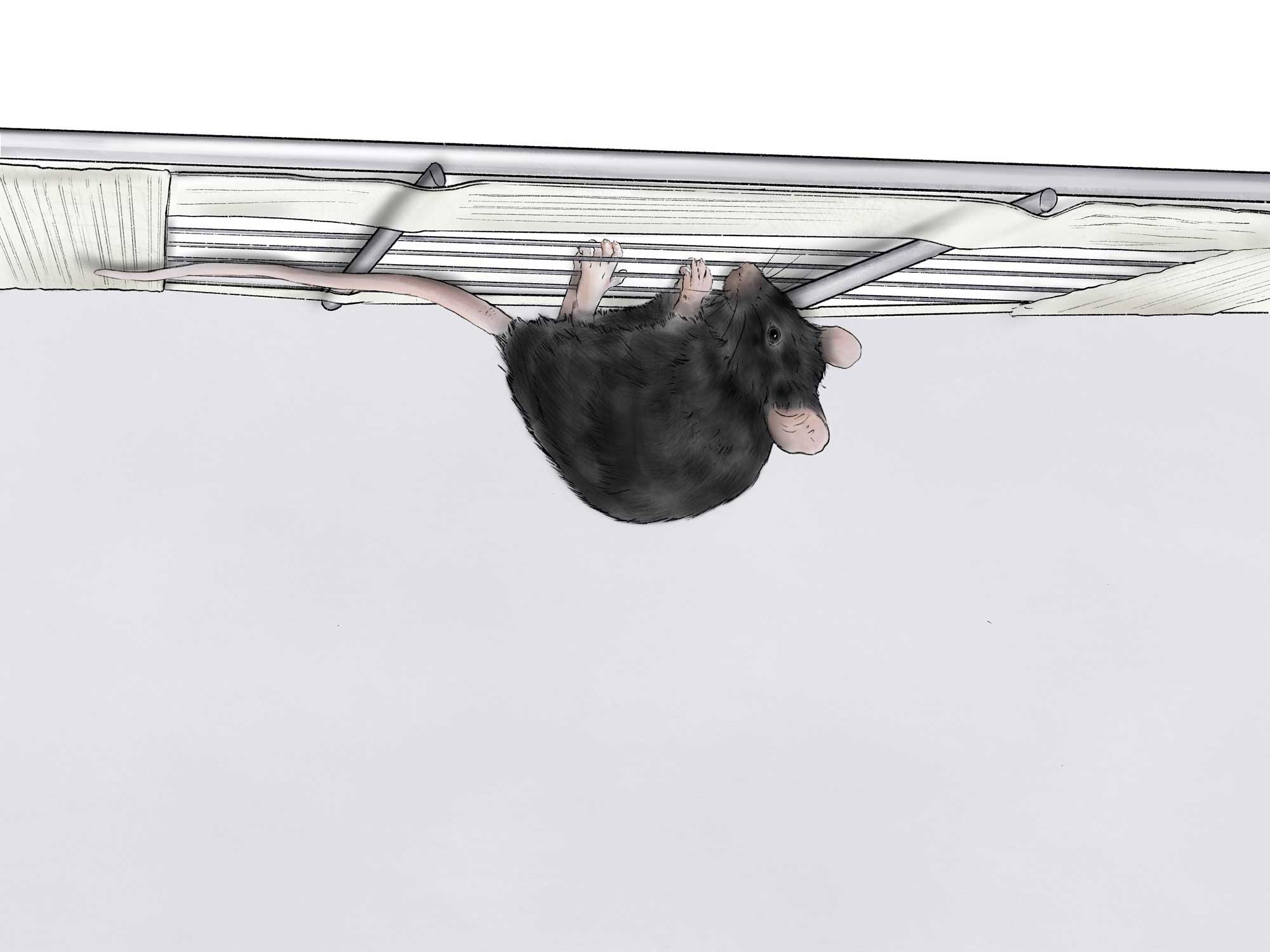The wire hanging test detects neuromuscular abnormalities of muscle strength. For this test, a wire cage lid is used with duct tape around the edges to prevent the mouse from walking off the rim. The animal is placed on the top of the cage lid. The lid is then slightly shaken to force the mouse to grip the wire. Afterwards, the lid is slowly turned upside down. The lid is held at a height of approximately 0.5 –0. 6 m above a soft underlay, high enough to prevent the mouse from jumping down, but not high enough to cause harm in the event of a fall. The time until the animal falls is measured. A 90 or 300 second cut-off time is used depending on the model.
An alternative test to evaluate muscle strength is the grip strength test.
The test is commonly used to test basic neuromuscular changes of animal models of different diseases, such as Parkinson’s disease, amyotrophic lateral sclerosis, Huntington’s disease, Niemann-Pick disease, Gaucher disease, Pompe disease, mucopolysaccharidoses, multiple sclerosis and many more.


Figure: Wire hanging test in 1, 2, 3, and 6 month old Line 61 mice compared to non-transgenic littermates. Latency to fall off the wire cage lid. Line 61 mice develop weakened muscle strength at early age of 1 month that progressively worsens while non-transgenic littermates have a steady muscle strength. n = 11 – 15 per group; mean + SEM; Two-way ANOVA with Bonferroni’s post hoc test. *differences between genotypes; #differences between age groups; *p<0.05; ***p<0.001.
